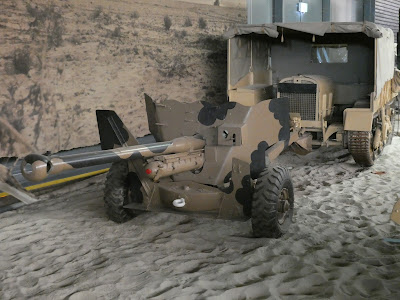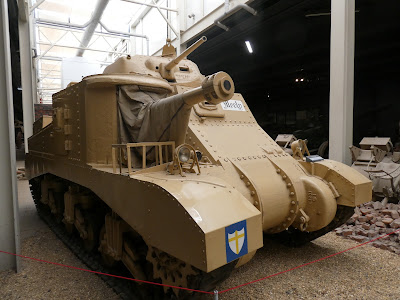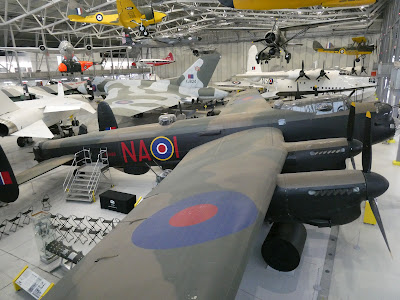Having set up my first Rapid Fire Reloaded game last time, this post is to report how it turned out.
The 1st Battalion West Suffolks had been tasked with capturing the small hill-top hamlet of Monte Lucedelsole, which was being held by the German 1 Battalion, 960th Grenadiers. We saw last time that on turn 1 the British had entered the table, pushing their Carrier Platoon and Battalion HQ Bren Carriers close to the Wastern and Eastern woods - and promptly ran into a fusillade of Panzerfaust and small arms fire. Contact!
 |
Enter the West Suffolks..
|
On Turn 2, the Carrier platoon dismounted its PIAT team in the shelter of hedges close to West Wood, while 'A' Company's footsloggers moved up to join them. In the centre, B Company took shelter behind the stone-walled enclosure which also sheltered the Support Company's 3-inch mortar team. On the right, Battalion HQ bailed out of its battered carriers into the cover of a hedge, where they were joined by their PIAT team and 2-inch mortar, while C Company advanced on foot to their right.
Now the British could start shooting - not least because Rapid Fire Reloaded (doubtless correctly) allows PIATs to be used as 'HE' weapons against infantry targets, and they can be quite nasty (if a hit is scored, roll 4D6 for effect, so you might kill 4 figures if you get lucky!). German 3rd Kompanie in the West Wood, and 1st Kompanie in East Wood, started to take casualties. In the centre, the Suffolks 3-inch mortar started a sort of duel with their German 81mm counterpart on the hill, but missed with their first attempt. The fire of the British off-board 25-pounder battery could be called in by its Forward Observation Officer, also targeted the German mortat team - and also missed! Not great shooting by the Suffolks' mortars and artillery, and I'm afraid it didn't get very much better..
 |
Carrier Platoon PIAT helps out 'A' Coy.
|
In response the Germans mostly sat tight and returned fire - though 3rd Kompanie in the West Wood pulled back into the cover of the interior after that nasty PIAT experience. In East Wood, 1st Kompanie took a different approach, moving some men forward to join the firing line - though the mechanism of reducing their movement in woods according to a die roll meant that they moved very slowly this turn! Their comrades at the treeline inflicted one casualty on the Sufolks advancing 'C' company.
The heaviest German eweapons in play were by their 81mm mortar and 75mm Infantry Gun, plastering the British 3-inch mortar team in the walled enclosure. The 75mm gun scored one casualty, the 81mm mortar's first shot got another, but the mortar's 2nd shot missed! That gave 2 casualties on the British mortar, but to destroy a support weapon with a 3-figure crew, you need to score 3 in the same turn, so the British mortar team survived - just! That's quite fun rule, it certainly adds a bit of tension as you keep firing various weapons at the same target.
Turn 3 saw the West Suffolks' rifle companies trying to push forward to the woods on their left and right, moving out to the flanks in doing so - the carrier platoon re-mounted its PIAT team, aiming to ferry them to West Wood as they realised the Germans had pulled back there. More dramatically, on the right 'C' Company made a dash across the open, trying to rush the Germans in East Wood. British firing hotted up - the mortar and artillery duel continuing, of course. The Suffolks' 3-inch mortar scored one hit on their German 81mm opponents - but the 25-pounder battery missed again, with both guns! Better shooting at the East Wood, where the Battalion HQ 2-inch mortar and 'C' Company's small arms fire got 3 kills on German 1st Kompanie - which was now down to half strength. the East Wood looked vulnerable,
 |
Turn 3: 'C' Coy. 'rush' East Wood
|
In response, German 1st Kompanie managed to get its remaining men up to the perimeter of East Wood to form a firing line, just in time! At West Wood, 3rd Kompanie started to bring forward reinforcements in a similar fashion, and sent its men in the wood forward again to fire. Hopefully the situation could be stabilised on both flanks.. German fire was indeed quite effective - 1st Kompanie scored 2 kills on 'C' Company, and 3rd Kompanie killed 1 of 'A' Coy. The 75mm infantry gun shifted fire to British 'B' Company in the stone enclosure, and started to inflict losses on them too. The mortar duel continued - but the 81mm missed with both shots. . Things suddenly looked more tricky for the Suffolks - losing 5 figures from 3 Companies ( total initial strength 24 figures ) in one turn was clearly not going to be sustainable.
.JPG) |
End of Turn 3 - fighting for the woods
|
Now to Turn 4 : something of a climax, as 'A' Company West Suffolks' charged into West Wood and close assaulted its defenders. In the centre, 'B' company decided against sitting in the enlosure getting shelled, and moved forward, hoping to reach the next hedge - quite risky! Close Assaults are decided before firing - so 'A' Coy. and 3 Komp. rolled their dice. Attackers roll 1D6, adding the number of figures in contact to give their total score, while defenders score number of figures plus D6 roll, plus 2, Highest total wins, and the loser takes casualties according to the score difference - simple. 'A' company had 5 figures but rolled a '2' - score 7. 3rd Kompanie only 2 figures, but rolled a '4', plus bonus 2 gave a total of 8 -the Germans came out winners. 'A' Company retired, taking one casualty. If only they'd rolled higher!
The ongoing mortar duel just kept going, with the British 3-inc mortar getting 2 hits and 2 kills agianst the German 81mm. It was now down to the 25-pounder battery, but their FOO rolled a '1' - which means his request for a 'stonk' failed to get through to the guns, so no firing! The German mortar crew breathed again.
 |
Turn 4 : 'C' Coy, Close Assault - was repulsed
|
On the right, 'C' Company, the battalion HQ mortar and PIAT all fired on German 1st Kompanie - and inflicted no casualties! 'C' Company then took a big gamble, and charged in to Close Assault, but fortune was not with them, rolling a 2 against the Germans' 4. 'C' Company was repulsed with 3 more casualties - pretty much a disaster. The West Suffolks' Battalion commander had little choice but to bring on his reserve. 'D' Company coming up to replace the remnants of 'C' Company. That was a dreadful turn for the British, with close assualts on both woods stopped in their tracks at some cost, while artillery and mortar fire achieved precisely nothing.
The Germans in their turn moved reinforcements into West Wood and kept firing, though with mixed results. Their 81mm mortar scored 2 hits on the British 3-inch mortar -but the 75mm infantry gun missed, and the British mortar survived yet again. 3rd Kompanie fire on 'A' Company had no effect, likewise 1st Kompanie against the Suffolks Battalion HQ, but in the centre, 'B' Company had exposed itself to fire from a german MMG on the hill - and took another 2 losses.
With that, at the end of Turn 4 the British were in a terrible position - 50% losses on 'A' and 'B' Companies, 75% on 'C' Company, and no real progress made. With 'D' company coming up they might take East Wood, but had insufficient strength to progress anywhere else. Their artillery and mortars had done nothing to help, getting embroiled in a counter-battery duel that had no result - though perhaps at least keeping the German mortar and infantry gun occupied, which will have saved even more losses from the rifle companies.
 |
End of Turn 4 - and of the game
|
So, I called it a day at that point; far from a successful game for the British, with Monte Lucedelsole remaining firmly in German hands. And perhaps not terribly exciting, I'll admit, but the main point was to try out the
Rapid Fire Reloaded rules. In that respect, I was pretty happy - the rules were very simple to understand and to use. Having started in WW2 gaming all those decades ago with Chrles Grant's
Battle, these seemed to have a similar spirit - I like the simplicity of rolling a few dice needing 5 or 6 to kill, or whatever - and individaul figure removal is a balst from the past, in a good way - seems entirely appropriate for this kind of game. Spotting rules equally simple and effective, and artillery and mortar fire a matter of a few die rolls. Mortars having two shots makes them potentially deadly, as in reality, and off-table artillery have easy rules for 'calling in' fire, and 'bracketing' - basically the second shot is more likely to hit than the first. Not that my 25-pounders managed that! Close Assaults are pretty risky and can be costly, as 'C' Company found out, after their covering fire failed to deplete the defenders. In the excitement the British failed to lay down any smoke, which might have reduced casualties, but their artillery and mortars were too busy, fruitlessly trying to kill their opposite numbers.
Fairly obviously, the West Suffolks were always likely to have a hard time, but I'm afraid the dice gods took a hand, especially with the off-board artillery, and crucially in the two close assaults! But that is just how things go sometimes. It's pretty clear that a two-battalion force would have been more likely to succeed, and some armoured support could have been useful, but I wanted to keep things simple for a first game, and limit numbers of units so as not to get bogged-down. I'm afraid the West Suffolks did get bogged-down, as a result!
I seem to have written quite a lot, considering I have described only three moves of quite a small game! But I hope it's been fun, and interesting for anyone who might be thinking about trying these rules. I am pretty well pleased with them so far, and I can imagine they would do very well for larger games - the simplicity should make it easy to handle larger formations. I will certainly persist with these rules, as the West Suffolks and the 960th Grenadiers and their comrades begin what may be a long-running struggle up and down the land of Italy.
Meanwhile I have also been lucky enough to take part in another of Jon Freitag's remote games, as we had a second go at the ECW Battle of Cheriton - this time with me as a Royalist, I won't give any spoilers, but it was a great game, as Jon's games usually are, and I look forward to his report of the evening! Not sure where my next post will take us, to be frank - but until then, keep well everyone.























.JPG)

